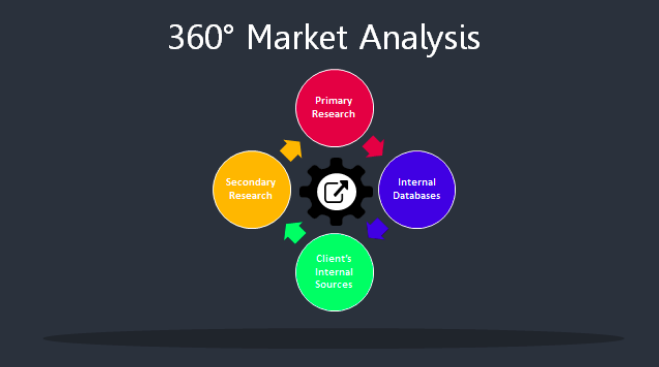- +1-315-215-1633
- sales@thebrainyinsights.com

The increasing incidence of health issues caused by poor air quality – Heightened concerns or health issues, the emergence of COVID-19 pandemic, and the rising awareness of the effects of environment on human health are considered as the major factors for the increasing market demand of IAQ monitors. This is because many people are becoming sensitive to the effects of poor indoor air quality. The effects of these pollutants have been associated with respiratory problems, allergies, cardiovascular diseases, chronic diseases including asthma. In turn, people and firms have adopted air quality analysis to prevent the deterioration of health in homes, businesses, and other institutions such as schools. The COVID-19 pandemic further highlighted the importance of IAQ. The virus brought highlighted the importance of ventilation and efficient air conditioning systems through which the airborne diseases could be prevented. Since the prevalence of cases of infectious diseases increased, concerns regarding the quality of indoor air also rose and thus the use of IAQ monitors. These devices emerged as critical in providing safe indoor spaces to residents and enhancing their use across both the residential and commercial segments. Another factor that has also a significant influence on the increased market growth rate is environmental awareness. With climate change and pollution becoming topics of global concern, people and companies demand solutions that reduce pollution, including clean indoor air.
High costs of indoor air quality monitors – The prohibitively high costs of setting up the IAQ monitor and the technological design and operational challenges pose major barriers when it comes to the demand for the IAQ monitors. While there are affordable basic models that cover only one or two pollutants, the advance systems of pollutants’ monitoring including integration with smart devices and extra functions cost a lot of money. For many consumers, the initial investment may appear very large in proportion to the perceived benefits of use. Also, some IAQ monitor’s models may have high technological requirements that will lead to low adoption rates. Some IAQ monitors are complex with complex sensor configurations, multiple features, and compatibility with other smart house or building management systems. Technically challenges consumers find it extremely challenging to install and maintain such systems. Some IAQ monitors are complicated to own because they need calibration, maintenance, and troubleshooting at times.
Technological advancements and favourable government regulations – Restrictions set by government authorities and developments in technology are the two most critical factors positively influencing the IAQ monitor market. With more countries implementing high standards for indoor air quality, the market for accurate IAQ monitoring technologies is increasing. Today’s regulatory agencies are imposing threshold levels of emissions including CO2, particulate matter, VOCs and other noxious effluents. As a result, industries such as health care, education, hospitality, and manufacturing have found these monitors essential. This has necessitated their adoption as failure to meet indoor air quality standards attracts some stiff regulations. At the same time, new IAQ monitoring technologies are providing increasingly simple, effective, and cost-friendly devices to meet those needs. Smart technologies enable IAQ monitors to acquire data in real-time, be remotely accessed and controlled and respond autonomously, making them more useful and practical for both residential and commercial use. With improvements such as Wi-Fi connectivity, a mobile application interface, and compatibility with other smart home systems, IAQ monitors’ application witnessed a rise.
This study forecasts revenue at global, regional, and country levels from 2020 to 2033. The Brainy Insights has segmented the global indoor air quality monitors market based on below mentioned segments:
Global Indoor Air Quality Monitors Market by Product Type:
Global Indoor Air Quality Monitors Market by Pollutant Type:
Global Indoor Air Quality Monitors Market by End User:
Global Indoor Air Quality Monitors Market by Technology:
Global Indoor Air Quality Monitors Market by Region:
Research has its special purpose to undertake marketing efficiently. In this competitive scenario, businesses need information across all industry verticals; the information about customer wants, market demand, competition, industry trends, distribution channels etc. This information needs to be updated regularly because businesses operate in a dynamic environment. Our organization, The Brainy Insights incorporates scientific and systematic research procedures in order to get proper market insights and industry analysis for overall business success. The analysis consists of studying the market from a miniscule level wherein we implement statistical tools which helps us in examining the data with accuracy and precision.
Our research reports feature both; quantitative and qualitative aspects for any market. Qualitative information for any market research process are fundamental because they reveal the customer needs and wants, usage and consumption for any product/service related to a specific industry. This in turn aids the marketers/investors in knowing certain perceptions of the customers. Qualitative research can enlighten about the different product concepts and designs along with unique service offering that in turn, helps define marketing problems and generate opportunities. On the other hand, quantitative research engages with the data collection process through interviews, e-mail interactions, surveys and pilot studies. Quantitative aspects for the market research are useful to validate the hypotheses generated during qualitative research method, explore empirical patterns in the data with the help of statistical tools, and finally make the market estimations.
The Brainy Insights offers comprehensive research and analysis, based on a wide assortment of factual insights gained through interviews with CXOs and global experts and secondary data from reliable sources. Our analysts and industry specialist assume vital roles in building up statistical tools and analysis models, which are used to analyse the data and arrive at accurate insights with exceedingly informative research discoveries. The data provided by our organization have proven precious to a diverse range of companies, facilitating them to address issues such as determining which products/services are the most appealing, whether or not customers use the product in the manner anticipated, the purchasing intentions of the market and many others.
Our research methodology encompasses an idyllic combination of primary and secondary initiatives. Key phases involved in this process are listed below:

The phase involves the gathering and collecting of market data and its related information with the help of different sources & research procedures.

The data procurement stage involves in data gathering and collecting through various data sources.
This stage involves in extensive research. These data sources includes:
Purchased Database: Purchased databases play a crucial role in estimating the market sizes irrespective of the domain. Our purchased database includes:
Primary Research: The Brainy Insights interacts with leading companies and experts of the concerned domain to develop the analyst team’s market understanding and expertise. It improves and substantiates every single data presented in the market reports. Primary research mainly involves in telephonic interviews, E-mail interactions and face-to-face interviews with the raw material providers, manufacturers/producers, distributors, & independent consultants. The interviews that we conduct provides valuable data on market size and industry growth trends prevailing in the market. Our organization also conducts surveys with the various industry experts in order to gain overall insights of the industry/market. For instance, in healthcare industry we conduct surveys with the pharmacists, doctors, surgeons and nurses in order to gain insights and key information of a medical product/device/equipment which the customers are going to usage. Surveys are conducted in the form of questionnaire designed by our own analyst team. Surveys plays an important role in primary research because surveys helps us to identify the key target audiences of the market. Additionally, surveys helps to identify the key target audience engaged with the market. Our survey team conducts the survey by targeting the key audience, thus gaining insights from them. Based on the perspectives of the customers, this information is utilized to formulate market strategies. Moreover, market surveys helps us to understand the current competitive situation of the industry. To be precise, our survey process typically involve with the 360 analysis of the market. This analytical process begins by identifying the prospective customers for a product or service related to the market/industry to obtain data on how a product/service could fit into customers’ lives.

Secondary Research: The secondary data sources includes information published by the on-profit organizations such as World bank, WHO, company fillings, investor presentations, annual reports, national government documents, statistical databases, blogs, articles, white papers and others. From the annual report, we analyse a company’s revenue to understand the key segment and market share of that organization in a particular region. We analyse the company websites and adopt the product mapping technique which is important for deriving the segment revenue. In the product mapping method, we select and categorize the products offered by the companies catering to domain specific market, deduce the product revenue for each of the companies so as to get overall estimation of the market size. We also source data and analyses trends based on information received from supply side and demand side intermediaries in the value chain. The supply side denotes the data gathered from supplier, distributor, wholesaler and the demand side illustrates the data gathered from the end customers for respective market domain.

The supply side for a domain specific market is analysed by:
The demand side for the market is estimated through:
In-house Library: Apart from these third-party sources, we have our in-house library of qualitative and quantitative information. Our in-house database includes market data for various industry and domains. These data are updated on regular basis as per the changing market scenario. Our library includes, historic databases, internal audit reports and archives.
Sometimes there are instances where there is no metadata or raw data available for any domain specific market. For those cases, we use our expertise to forecast and estimate the market size in order to generate comprehensive data sets. Our analyst team adopt a robust research technique in order to produce the estimates:
Data Synthesis: This stage involves the analysis & mapping of all the information obtained from the previous step. It also involves in scrutinizing the data for any discrepancy observed while data gathering related to the market. The data is collected with consideration to the heterogeneity of sources. Robust scientific techniques are in place for synthesizing disparate data sets and provide the essential contextual information that can orient market strategies. The Brainy Insights has extensive experience in data synthesis where the data passes through various stages:


Market Deduction & Formulation: The final stage comprises of assigning data points at appropriate market spaces so as to deduce feasible conclusions. Analyst perspective & subject matter expert based holistic form of market sizing coupled with industry analysis also plays a crucial role in this stage.
This stage involves in finalization of the market size and numbers that we have collected from data integration step. With data interpolation, it is made sure that there is no gap in the market data. Successful trend analysis is done by our analysts using extrapolation techniques, which provide the best possible forecasts for the market.
Data Validation & Market Feedback: Validation is the most important step in the process. Validation & re-validation via an intricately designed process helps us finalize data-points to be used for final calculations.

The Brainy Insights interacts with leading companies and experts of the concerned domain to develop the analyst team’s market understanding and expertise. It improves and substantiates every single data presented in the market reports. The data validation interview and discussion panels are typically composed of the most experienced industry members. The participants include, however, are not limited to:
Moreover, we always validate our data and findings through primary respondents from all the major regions we are working on.
Free Customization
Fortune 500 Clients
Free Yearly Update On Purchase Of Multi/Corporate License
Companies Served Till Date